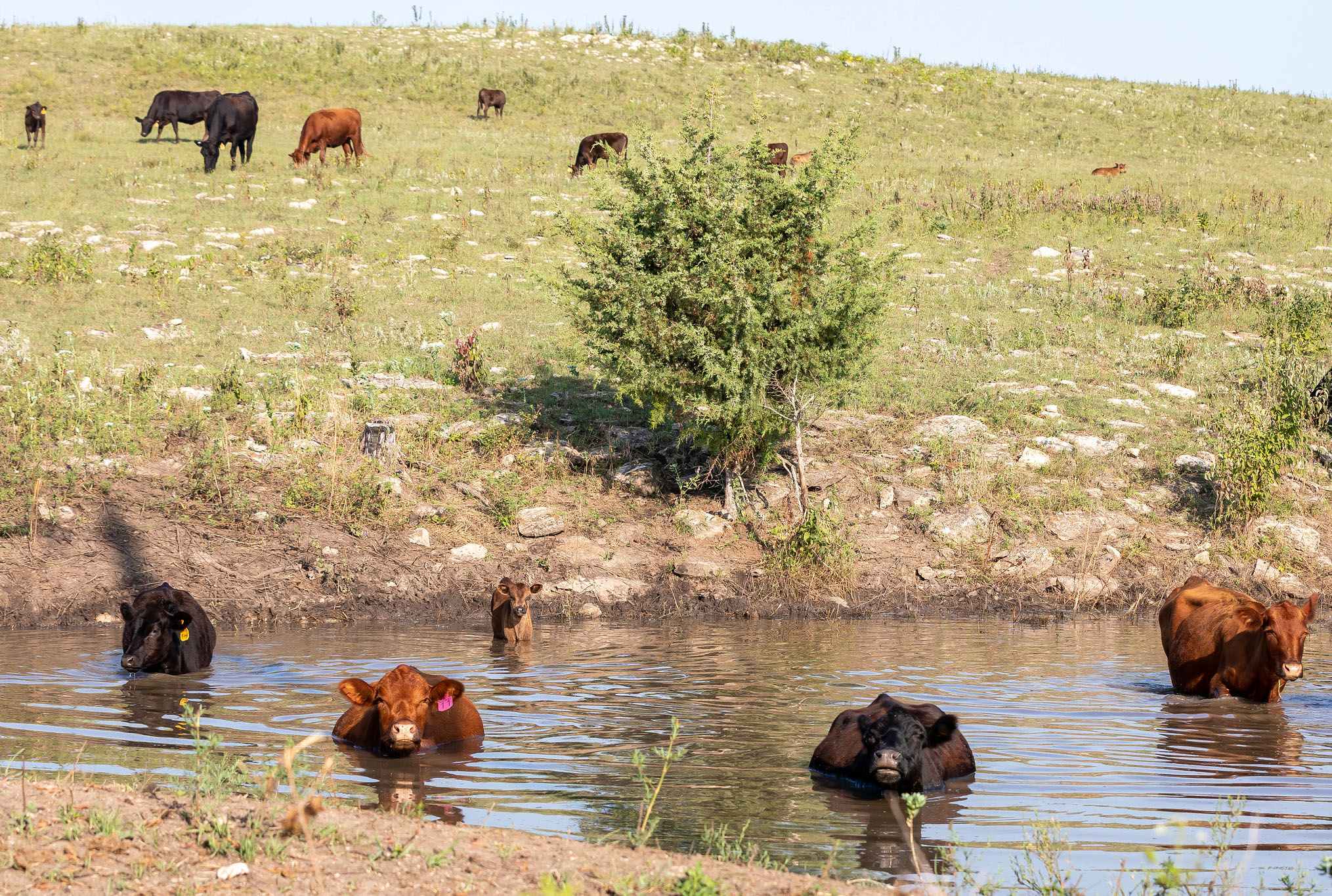
Well-maintained ponds can be a source of water for cattle out on summer pastures. | Download this photo.
Cattle Chat: Ponds as a water source for livestock
K-State beef cattle experts discuss changes in water quality as ponds dry up in the summer heat
June 20, 2023
By Lisa Moser, K-State Research and Extension news service
MANHATTAN, Kan. — Anyone who has spent time working outside in the summer knows the importance of drinking adequate amounts of clean water to keep heat-related illnesses away. Just like people, cattle will increase their water consumption in the summer, and that source needs to be well maintained for optimum health, say the experts at Kansas State University’s Beef Cattle Institute.
“Cows typically will drink twice as much water in the summer per day as compared to what they drink daily in the winter,” said K-State veterinarian Brad White, speaking on a recent Cattle Chat podcast. Typically, for a lactating cow that ranges from 20-30 gallons per day.
One source of water that many producers turn to for cattle out on summer pasture is ponds, White said. And like any water source, they must be monitored for quality and quantity as the summer progresses.
“As ponds start to get low on water, the cattle are sourcing the water from a smaller access point, and so it is important to monitor them,” said K-State veterinarian Brian Lubbers.
He added that there are increased health risks when cattle are drinking from a depleted water source that is hard to get to.
“As ponds shrink, accessibility to the water can be an issue depending on the shape of the pond,” Lubbers said. “Deep ponds can have steep sides that make it difficult for the cattle to reach and leave the water source.”
Also as the pond water becomes stagnant, the quality goes down, White said.
“As the water amount decreases, there is more fecal contamination coming from cattle trying to get to the available water,” Lubbers said.
Once ponds are no longer viable watering options, it is time to look for other solutions, say the experts.
“A temporary solution is to haul water in tanks to the pastures where the cattle are,” K-State nutritionist Phillip Lancaster said.
He added that it is critical that the water tank only be used for storing water and that no amount of rinsing will fully clear the chemicals from a tank that was used for something else prior to hauling water.
“The plastic polymers in the tank may hold onto the nitrates and you cannot dilute them enough through rinsing to be sure that it won’t kill cattle,” Lancaster said.
White agreed, adding: “If the tank has been used for something besides water, it is no longer a viable option for water.”
Another solution to a possible pond dry-up is to look at the grazing rotation of the herd, Lancaster said.
“Producers may need to graze a pasture with the pond earlier in the season to use that water source first, and then rotate cattle to other pastures that either have other water sources or are easier to haul water to,” he said.
To hear the full discussion, listen to the Cattle Chat podcast online or through your preferred streaming platform.

